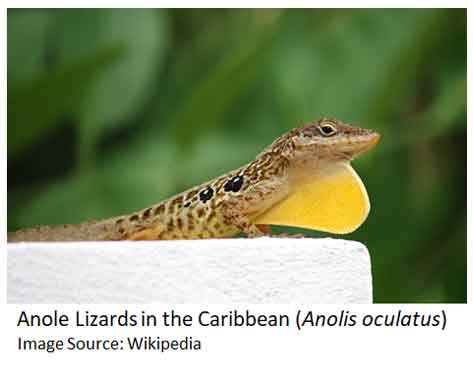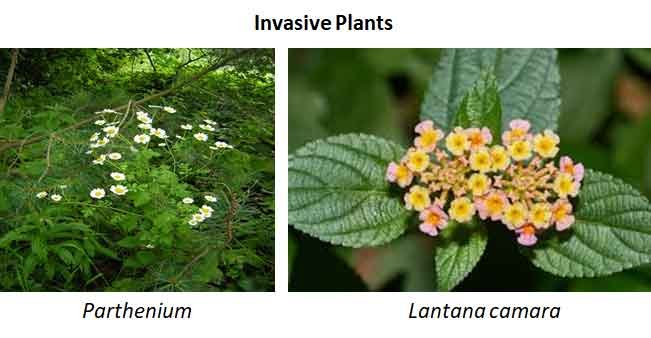Introduction
Adaptive Radiation in Evolution: Adaptive radiation stands as a cornerstone concept in evolutionary biology, explaining how species evolve and diversify rapidly in response to varying environmental pressures. This post will help you to understand the concept of adaptive radiation in evolution and its role in speciation with examples. You can download this notes from the download linke provided below the post.
You may like: Convergent Evolution (with examples)
What is Adaptive Radiation?
Ø Definition: Adaptive radiation occurs when one ancestral species diversifies into many distinct species, each adapted to different ecological niches.
Ø It involves a burst of genetic, morphological, and behavioral changes, allowing new species to thrive in various environments.
Historical Context of Adaptive Radiation
Ø Concept of adaptive radiation became well-known through Charles Darwin’s study of finches (Darwin finches) in the Galápagos Islands.
Ø These finches had diverse beak shapes and sizes, each suited to different food source.
Ø It is a best example of adaptive radiation illustrating how species can diverge to exploit different ecological niches.
Mechanisms of Adaptive Radiation
Genetic Variations and Mutations
Ø Genetic variations and mutations are the raw materials of adaptive radiation.
Ø Mutations introduce new traits, some of which may offer a selective advantage in a particular environment.
Ø Natural selection then amplifies these advantageous traits, leading to the emergence of new species.
Ecological Opportunities and Niches
Ø Ecological opportunities arise when new habitats or resources become available.
Ø These opportunities can be:
- Colonization of new areas
- Extinction events that reduce competition
- Development of new resources
Ø Species that exploit these niches can rapidly diversify through adaptive radiation.
Environmental Changes and Pressures
Ø Environmental changes create pressures that drive species to adapt or perish.
Ø Changes in the environment can be:
- Climate shifts or climatic changes
- Geological transformations
- Alterations in food availability
Ø These pressures can accelerate the pace of adaptive radiation, as species evolve to cope with new challenges and exploit emerging opportunities.
The Process of Speciation
Allopatric Speciation
Ø Allopatric speciation occurs when populations of a species become geographically isolated, leading to the divergence of species due to the lack of gene flow.
Ø Over time, genetic differences accumulate, resulting in the emergence of new species.
Sympatric Speciation
Ø Sympatric speciation takes place within a shared geographic area.
Ø Speciation occurs when populations use different resources or habitats within the same region, leading to reproductive isolation and eventual speciation.
Peripatric and Parapatric Speciation
Ø Peripatric speciation: Occurs when a small, isolated population at the edge of a species’ range evolves into a new species due to genetic drift.
Ø Small, isolated populations at the edge of a species’ range undergo rapid evolutionary changes due to genetic drift and selective pressures.
Ø Parapatric speciation: Occurs in adjacent populations that experience some level of gene flow but are subject to different environmental pressures, leading to divergence.
What is the Role of Adaptive Radiation in Speciation?
Divergence of Species
Ø Adaptive radiation causes species to evolve distinct traits for different ecological niches.
Ø Natural selection drives this divergence by favoring well-adapted individuals.
Filling Ecological Niches
Ø Species undergoing adaptive radiation to fill previously unoccupied or new ecological niches.
Ø This process increases ecosystem complexity and stability by diversifying functional roles.
Examples of Adaptive Radiation in Nature
Darwin’s Finches in the Galápagos Islands
Ø Darwin’s finches are emblematic of adaptive radiation.
Ø These birds evolved from a common ancestor into multiple species, each with distinct beak shapes and feeding strategies
Ø Darwin finches are the best example to prove how adaptive radiation can drive morphological diversity.
Cichlid Fish in African Great Lakes
Ø The cichlid fish in Africa’s Great Lakes are a remarkable example of adaptive radiation.
Ø They exhibit diverse forms and behaviors adapted to various ecological niches, showcasing adaptive radiation’s role in generating biodiversity.
Anole Lizards in the Caribbean
Ø Anole lizards in the Caribbean have diversified into numerous species, each occupying unique ecological niches.
Ø This diversification is seen in their varied limb lengths, toepad sizes, and behaviors, adapted to different microhabitats.
Hawaiian Honeycreepers
Ø Hawaiian honeycreepers are another best example highlight the role of adaptive radiation in island ecosystem.
Ø These birds showcase adaptive radiation through their diverse beak shapes and feeding habits.
Ø These birds evolved from a single ancestor into multiple species, each specialized for different food sources.
Adaptive Radiation in Fossil Records
Early Mammals Post-Dinosaur Extinction
Ø The extinction of dinosaurs created ecological niches that early mammals exploited, triggering adaptive radiation.
Ø This led to the emergence of diverse mammalian forms, from small insectivores to large herbivores and carnivores.
Cambrian Explosion and Marine Life
Ø The Cambrian Explosion, a period of rapid diversification in marine life, is a prime example of adaptive radiation in the fossil record.
Ø During this time, a multitude of new species emerged, exhibiting a wide range of body plans and ecological roles, laying the foundation for modern marine biodiversity.
Adaptive Radiation in Modern Times
Human Impact and New Ecological Niches
Ø Human activities have created new ecological niches, prompting adaptive radiation in some species.
Ø Urban environments, agricultural landscapes, and altered ecosystems present novel opportunities for species to adapt and diversify.
Invasive Species and Rapid Adaptation
Ø Invasive species undergo rapid adaptive radiation in their new environments.
Ø Freed from their native predators and competitors, these species can rapidly diversify, exploiting available niches
Ø Most of the time these invasive species cause significant impacts to the prevailing ecosystem.
Comparative Analysis of Adaptive Radiation Across Species
Morphological Divergence
Ø Morphological divergence, such as variations in body size, shape, and coloration, is a hallmark of adaptive radiation.
Ø These differences reflect adaptations to specific ecological roles and environmental conditions.
Behavioral Adaptations
Ø Behavioral adaptations, including changes in feeding habits, mating behaviors, and social structures, also play a crucial role in adaptive radiation.
Ø These behaviors enable species to exploit different niches and avoid competition.
Genetic Divergence
Ø Genetic divergence underpins the morphological and behavioral changes seen in adaptive radiation.
Ø Variations in genes related to development, metabolism, and reproduction drive the evolution of new species.
Implications of Adaptive Radiation in Conservation Biology
Preserving Biodiversity Hotspots
Ø Understanding adaptive radiation is vital for preserving biodiversity hotspots.
Ø Regions rich in species from adaptive radiation need targeted conservation efforts to maintain their ecological integrity.
Managing Ecosystems and Invasive Species
Ø Insights from adaptive radiation help in ecosystem management and controlling invasive species.
Ø Understanding species adaptation and diversification allows conservationists to protect native species and address the impacts of invasives.
Conclusion
Adaptive radiation plays a critical role in shaping the diversity of life on Earth. By exploring the mechanisms, processes, and examples of adaptive radiation, we gain a deeper appreciation for the complexity of evolution and the factors driving speciation. Continued research in this field will enhance our understanding of biodiversity and inform conservation efforts to protect our planet’s rich ecological heritage.
Dear Readers,
I hope you found this article on Adaptive Radiation is informative and beneficial. Your feedback and comments would be greatly appreciated. Whether you have suggestions, questions, or thoughts to share, I would be delighted to hear from you. Engaging with your comments helps me continue to produce high-quality content in Biology. Please feel free to leave a comment below. Thank you for your support.
Regards: Admin, EasyBiologyClass
| You may also like NOTES in... | ||
|---|---|---|
| BOTANY | BIOCHEMISTRY | MOL. BIOLOGY |
| ZOOLOGY | MICROBIOLOGY | BIOSTATISTICS |
| ECOLOGY | IMMUNOLOGY | BIOTECHNOLOGY |
| GENETICS | EMBRYOLOGY | PHYSIOLOGY |
| EVOLUTION | BIOPHYSICS | BIOINFORMATICS |
Want to read offline? download full PDF here !






